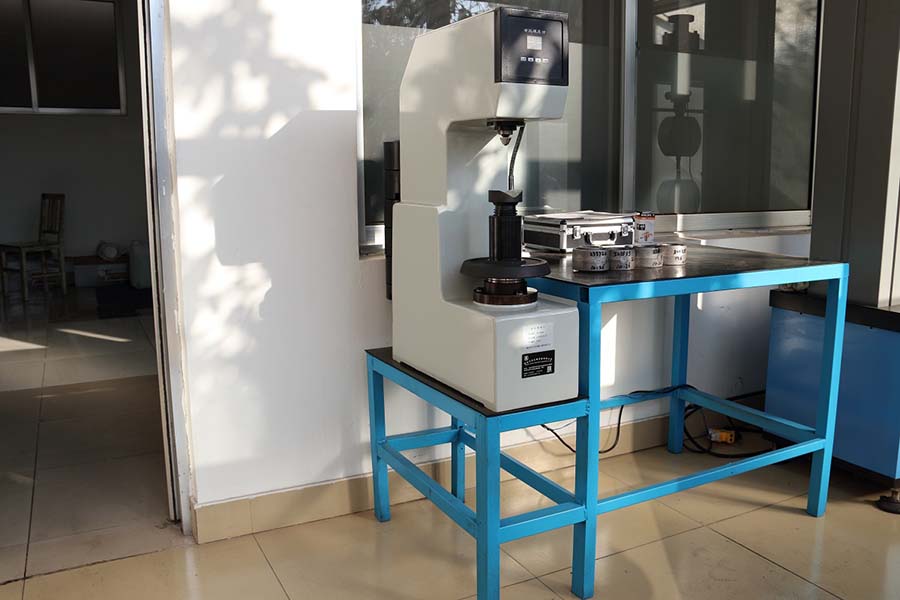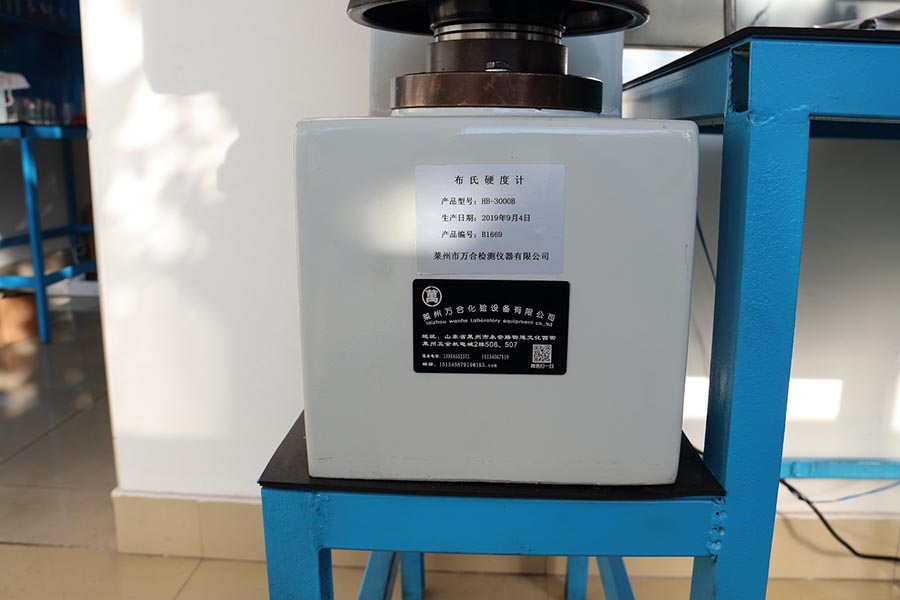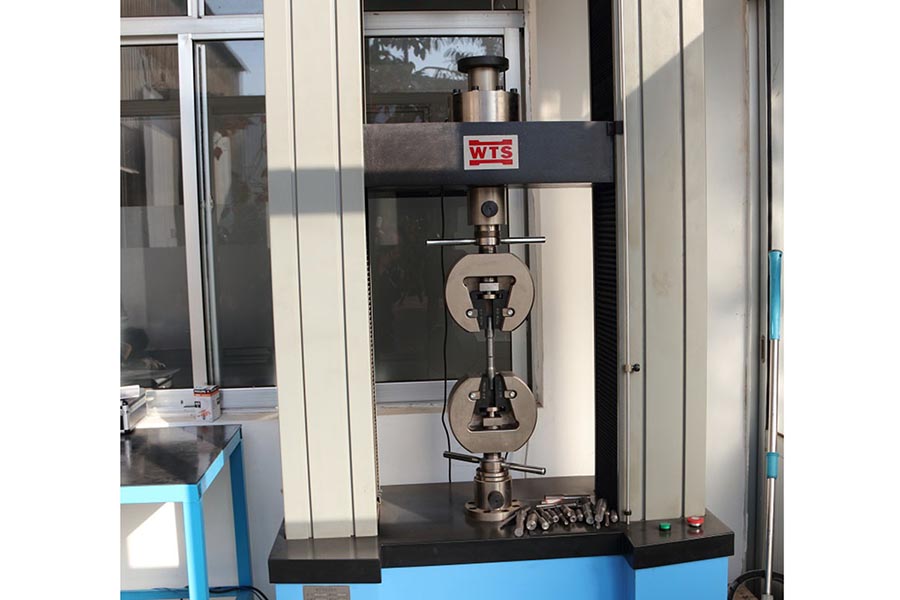Testing of mechanical properties of castings
It needs to be pointed out that the terminal inspection of casting quality is only the last checkpoint to prevent unqualified castings from leaving the factory. The key to ensuring the quality of castings lies in enhancing the quality awareness of all employees within the enterprise, strengthening quality supervision and management over the entire production process of castings, stabilizing the production process, organizing civilized production, and adopting advanced production technology and equipment as much as possible, equipped with sufficient Effective inspection methods for process quality and casting quality.
Conventional mechanical performance testing The conventional mechanical performance testing is carried out at room temperature. The testing items usually include tensile strength, yield strength, elongation after fracture, reduction of area, deflection, and impact absorption. (Or impact toughness) and hardness. Tensile strength, yield strength, elongation after fracture, and reduction of area are measured on a tensile testing machine; impact absorption or impact toughness is measured on an impact testing machine; deflection and bending strength are measured by transverse bending test methods; hardness is measured by Kind of hardness tester.1. Tensile test.
The tensile specimens of gray cast iron are machined by cylindrical single cast test bars or attached cast test bars. The diameter of the single casting test bar is 30mm, and it is poured in the same batch as the casting in the vertical casting dry sand mold. The diameter of the parallel section is 20mm±0.5mm. When the bending strength and deflection are used as the acceptance conditions of the mechanical properties of the casting, the bending test can be carried out, and the bending sample directly adopts the as-cast blank test bar with a diameter of 30mm±1mm. The shape, size and surface quality of tensile test specimens, bending test specimens and as-cast blank test bars, tensile test and bending test methods, technical requirements for the testing machine, and calculation and processing of measurement results shall all comply with industry standards.
Tensile test methods of other cast metals and alloys (including size measurement of tensile specimens, clamping methods, test rates, performance measurement methods, and test results rounding and processing, etc.), and types and cross-sections of tensile specimens The shape, gauge length, size, and surface quality should meet the requirements of CBT228-200 "Metallic Material Tensile Test Method at Room Temperature". The sample is not allowed to have mechanical damage, cracks, significant transverse knife marks, obvious deformation and other visible defects. The sticky sand, fins, burrs and other fleshy defects and adhesions on the surface of the sample should be removed. Tensile specimens can be cut from single cast test block, attached cast test block or casting body. The type, shape and size of single casting test block and attached casting test block, the cut position and direction of tensile specimen, the connection method and connection location of attached casting test block and casting body, shall be selected or agreed upon by the supplier and the buyer according to the corresponding casting standard . When the casting needs heat treatment, the single casting test block should be heat treated in the same furnace as the casting, and the attached test block should be cut off after heat treatment. Tensile specimens of brittle and hard materials such as white cast iron can be as-cast cylindrical specimens, or tensile specimens that have been annealed and processed by machining and heat treated in the same furnace as the casting. Sample shape, size, technical requirements and heat treatment specifications To be negotiated by both parties.2. Impact test.
The impact test is used to determine the impact absorption energy when the impact sample is broken under the secondary impact load. The impact testing machine should meet the requirements of GB/T3808-2002 "Inspection of Pendulum Impact Testing Machines" and should be periodically verified by the national metrology department. Impact samples are divided into V-notch impact samples, U-notch impact samples and non-notch impact samples. Gray cast iron adopts unnotched cylindrical impact specimens, which are machined from as-cast blank test bars with a diameter of 30mm. The nominal scale is 420mm×120mm. The casting method of the blank test bar, the technical requirements of the impact specimen, the technical parameters of the impact testing machine, the test conditions and methods should meet the requirements of GB6296-1986 "Impact Test Method for Gray Cast Iron". Impact samples of brittle and hard materials such as white cast iron can be unnotched as-cast blank samples, or unnotched samples that have been annealed and processed by machining and heat treated in the same furnace with the casting. The shape, size and technical requirements of the sample are determined by supply and demand. Other cast metals and alloys are U-shaped impact specimens (usually used for cast metals and alloys with large notch sensitivity) or V-shaped impact specimens are used as the strike sample.
U-shaped or V-shaped impact specimens can be taken from single-cast test blocks (rods), attached-cast test blocks (rods) or casting bodies. The sampling location and direction, the type, shape, size and casting method of single casting test block (rod) and attached casting test block (rod), and the connection method and connection location of attached casting test block (rod) and the casting body shall be based on the supply and demand parties The corresponding casting standards are selected or agreed upon. For castings that require heat treatment, the attached test block shall be cut off after heat treatment, and the single cast test block (bar) shall be heat treated in the same furnace as the casting. The nominal size of V-shaped and U-shaped notch impact standard specimens is 10mm×10mm×50mm, and the nominal notch depth: V-shaped notch depth is 2mm; U-shaped notch depth is 2mm and 5mm. The dimensional tolerances, surface roughness and other technical conditions of the notched impact test specimens, the conditions, methods and treatment of the test results of the impact test shall comply with GB/T229-2007 "Charpy Pendulum Impact Test Method for Metallic Materials" The performance of the impact specimens cut from the single casting test block (rod) and the attached casting test block (rod) should meet the requirements of the corresponding casting standard or order contract. The impact performance requirements of the body sample shall be negotiated by the supplier and the buyer according to the corresponding casting standard.
3. Hardness test.
There are two common methods for determining the hardness of castings: Brinell hardness method and Rockwell hardness method. Hard and brittle casting alloys are usually measured by the Rockwell hardness method, and other casting alloys are generally measured by the Brinell hardness method. For cast alloys with uniform metallographic structure such as cast steel, there is a certain conversion relationship between Rockwell hardness, Brinell hardness and tensile strength. Refer to GB/T112-199 "Ferrous Metal Hardness and Strength Conversion Value" and GB /T3771-1983 "Copper alloy hardness and strength conversion value".
The Brinell hardness method uses a cemented carbide ball with a certain diameter to press it into the surface of the sample with the corresponding test force. After the specified holding time, remove the test force, measure the indentation diameter on the surface of the sample, and divide the test force by the test force. The quotient obtained from the spherical surface area of the indentation represents the Brinell hardness value, and the symbol is HBW, which is suitable for materials with the Brinell hardness value less than or equal to 650. The instruments, samples, test methods and test results of the Brinell hardness test shall comply with GBT231.1-2002 "Metal Brinell Hardness Part I: "Test Method". The Brinell hardness test can be carried out on tensile specimens, impact specimens, castings or specially cast hardness test blocks. The test surface should be smooth and flat, free of scale and foreign dirt. The test location should meet the requirements of the corresponding casting standard or be negotiated by the supplier and the buyer. The Rockwell hardness method is to press the diamond cone indenter or the steel ball indenter into the surface of the sample under the action of the initial load and the total load (equal to the initial load plus the main load), and then remove the main load, and measure at the initial load. The indentation depth under load increases the e value, and the e value is used to calculate the Rockwell hardness.
The Rockwell hardness varies according to the scale used. The most commonly used scales are HRA, HRB and HRC. HRB adopts steel ball indenter with hardness value=130-c; HRA and HRC adopt diamond cone indenter with hardness value=100-e. The main load of HRA is 490.3N, and the measurement range is 60~85HRA; the main load of HRC is 1373N, and the measurement range is 20~67HRC. The instruments, specimens, test conditions and test methods used in the Rockwell hardness test, as well as the treatment of the test results shall comply with GB/T 230.1-2004 "Metal Rockwell Hardness Part 1: Test Method (A, B, C, D, E, F, G, H, K, N, T Scale)". The selection of the specimen, the test location and the technical requirements for the test surface of the Rockwell hardness test are the same as those of the Brinell hardness test.
In addition to Brinell hardness and Rockwell hardness, the hardness of metals can also be represented by Shore hardness (HS) and Vickers hardness (HV). Measuring the Shore hardness of metals should meet the requirements of GB/T4341-2001 "Metal Shore Hardness Test Method". The determination of the Vickers hardness of metals should meet the requirements of GB/T4340.1-1999 "Metal Vickers Hardness Test Part 1: Test Method". Various types of hardness testers should be periodically verified by the national metrology department in accordance with relevant standards.
Hardness Tester:

Hardness Tester:

Tensile Strength Tester:

 русский
русский



